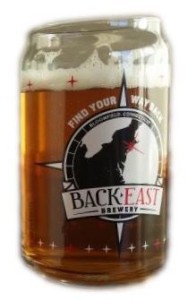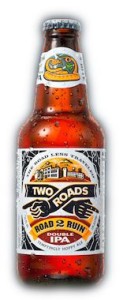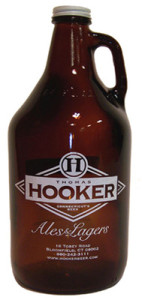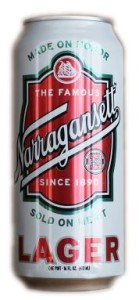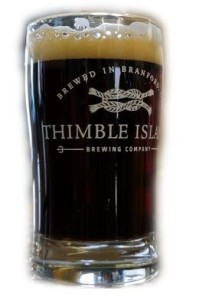Have you been told that you should reduce your gluten intake, creating a serious conflict with your love of the sudsy amber nectar we call beer? For some, giving up their favorite beer is the worst part about going gluten-free.

Due to the rise in awareness of celiac disease, more and more breweries are creating gluten-free beer and they’re getting better and better! What constitutes gluten-free vs. low gluten beer? What are gluten-free beers made out of? Are these beers actually drinkable? What types of reactions do people have to gluten? Wait, what is gluten anyway? I’ll be answering all this and more, followed by a list of great gluten-free and low-gluten beers.
What is gluten?
Gluten is the name for multiple proteins found in certain grains like wheat, rye, and barley. It gives bread its chewy, elastic texture and beer its body. Gluten is used in many food products and because it is used as a stabilizing agent it can pop up in some unexpected places like sauces, ice cream, and ketchup. It’s even in cosmetics and hair products, all making total avoidance very tricky.
What types of reactions to gluten do we see?
Celiac Disease/Celiac Sprue
Celiac disease is an autoimmune disease in which the consumption of gluten leads to damage of the intestines in genetically predisposed individuals. It is the primary and most severe form of gluten intolerance. Of the hundreds of proteins in gluten gliadin is the most well-known and the prime culprit in this condition, though secalin found in rye and hordein found in barley also fall under the gluten umbrella and cause problems if you have celiac disease. [1] Antibodies to gliadin are part of the diagnostic work-up for determining if someone has celiac disease. Usually anti-transglutaminase, endomysial antibodies, or deamidated gliadin peptide IgA antibodies are tested before an intestinal biopsy is performed to confirm the diagnosis. Additionally, there are several genetic markers that can be tested. [2] For more information about celiac disease click here.
Wheat Allergy
Some people may feel better when avoiding gluten because they have a wheat allergy and in avoiding gluten they have avoided their true allergy, wheat. For this reason, you may want to read on to check out some great local beers made without wheat which there is no shortage of! In a wheat allergy you could be reacting to any of 27 or more proteins that have been identified as potential allergens. [3]
Food Sensitivity vs. Food Intolerance
These terms seem like they would be synonymous but they actually have different meanings. Food sensitivity is an immune-mediated reaction, meaning your body produces antibodies, and the symptoms caused by this reaction can vary by person. Food intolerance is when you aren’t able to break down the food optimally due to a lack of an enzyme. Lactose intolerance is a good example and occurs when you don’t have enough lactase to break down the sugar, lactose. Lactose is then fermented by gut bacteria causing gas and bloating.
Non-Celiac Gluten Sensitivity
With the rise in awareness of celiac disease and increase in people experimenting with gluten-free diets, there have come many skeptics of non-celiac gluten sensitivity. This can be incredibly frustrating to the many people who do not have celiac disease but have significant symptoms ranging from abdominal pain, migraines, skin changes, fatigue, and more after eating gluten. Rather than being skeptical that a reaction is happening at all, it is far more progressive and helpful for patients to pursue the question — what then is going on?
Non-celiac gluten sensitivity is highly debated as a consensus of diagnosis and pathophysiology for the condition has not yet been reached, however it is mostly agreed that NCGS is:
“A clinical entity induced by the ingestion of gluten leading to intestinal and/or extraintestinal symptoms that resolve once the gluten-containing foodstuff is eliminated from the diet, and when celiac disease and wheat allergy have been ruled out.” [4]
There are theories that other proteins in grains other than gluten may be causing the reaction, though the ultimate cause is unknown. There is growing evidence however to support the existence of this condition. [5]
The link between gluten, intestinal permeability, and autoimmune disease
This topic can get a bit complex but I’ll try to keep it brief. A large part of your immune system is located in your gut and the interactions between your immune system, genetics, gut bacteria, and intestinal cells influence many aspects of health, even beyond immunity and gastrointestinal symptoms. Tight junctions between intestinal cells help insure that molecules coming through the intestine either pass through the gut without being absorbed or go through proper channels. Once molecules of food are broken down to smaller sizes they are able to be transported into the body through cellular transporters. When these tight junctions are compromised, larger molecules are able to pass between cells, rather than through transporters. The body’s immune system may then identify these large molecules as antigens (foreign invaders) and create an immune response against them.
These tight junctions are regulated largely by a protein called zonulin which is upregulated in autoimmune conditions like celiac disease and type 1 diabetes. [5] [6] There is mounting evidence of involvement of zonulin and compromised intestinal barrier function in multiple sclerosis, [7] [8] rheumatoid arthritis, [9] as well as other conditions like allergies, cancer, and infections. [10] [11]
FODMAPs
What did you just call me? Another example of food intolerance is when people have difficulty digesting other sugars that can be remembered using the acronym FODMAPs (fructo-, oligo-, di-, mono-, and polysaccharides). It is theorized that some people who benefit from avoiding gluten are seeing symptom relief because they are avoiding more of these sugars.
What can be called gluten-free?
Gluten labeling on alcoholic beverages is regulated by the Alcohol and Tobacco Tax and Trade Bureau which states that, like FDA regulations of food:
Alcohol beverages that are made from ingredients that do not contain gluten (such as wines fermented from grapes or other fruit and distilled spirits distilled from materials other than gluten-containing grains) may continue to make “gluten-free” claims.
but that:
Products made from gluten-containing grains may be labeled with a statement that the product was “Processed,” “Treated,” or “Crafted” to remove gluten, if that claim is made together with a qualifying statement that warns the consumer that the gluten content of the product cannot be determined and that the product may contain gluten.
Since the FDA has set an upper limit of 20 ppm (parts per million) gluten for foods, this is the goal for most breweries that remove gluten from their beer. Most beers that are crafted to reduce gluten therefore contain less than 20 ppm gluten, or .0002%. This threshold was chosen in part as it is the smallest level detectable by validated testing methods. [12] The FDA defines gluten free as:
In addition to limiting the unavoidable presence of gluten to less than 20 ppm, FDA now allows manufacturers to label a food “gluten-free” if the food does not contain any of the following:
- an ingredient that is any type of wheat, rye, barley, or crossbreeds of these grains
- an ingredient derived from these grains and that has not been processed to remove gluten
- an ingredient derived from these grains and that has been processed to remove gluten, if it results in the food containing 20 or more parts per million (ppm) gluten
Foods such as bottled spring water, fruits and vegetables, and eggs can also be labeled “gluten-free” if they inherently don’t have any gluten.
Under the final rule, a food label that bears the claim “gluten-free,” as well as the claims “free of gluten,” “without gluten,” and “no gluten,” but fails to meet the requirements of the rule is considered misbranded and subject to regulatory action by FDA.
How does this compare to gluten in foods?
 20 ppm is equal to .02 mg/gram. Based on the RACC (Reference Amount Customarily Consumed determined by the FDA) a slice of bread is about 25 grams. That means a “gluten-free” slice of bread would need to have less than .5 mg of gluten in a slice.
20 ppm is equal to .02 mg/gram. Based on the RACC (Reference Amount Customarily Consumed determined by the FDA) a slice of bread is about 25 grams. That means a “gluten-free” slice of bread would need to have less than .5 mg of gluten in a slice.
For a table of the gluten standards of gluten-free food companies look here.
Tolerable levels of gluten and cumulative effects
You might be wondering how much gluten can cause damage to someone with celiac disease. Studies have shown that for most patients with celiac disease, eating less than 10 mg of gluten daily is not likely to cause histological changes to the mucosa of the intestine. [1] In a 2007 study in the American Journal of Clinical Nutrition one patient with celiac disease experienced a clinical relapse with a 10 mg challenge dose of gluten. For most patients this amount of gluten does not cause changes to the intestinal mucosa.
What does 10 mg gluten look like? The short answer is about .33% to .48% of a slice of bread. The longer answer: It is estimated that 8-12% of a slice of bread by weight is gluten. This leaves 2065 mg – 3000 mg in a single slice. 10 mg gluten is therefore the amount in .48% to .33% of a slice of bread (note the decimals!). Conservatively, this is about 1/200ths of a slice of bread. Keep in mind however that everyone reacts differently and that these levels range by specific product, and though this level of 10 mg gluten likely does not cause damage in most patients, it can cause damage in some people. The conclusion of the study by Catassi suggests that “the ingestion of contaminating gluten should be kept lower than 50 mg/d in the treatment of [celiac disease].” That’s less than 2.4% of a slice of bread. [14]
Perhaps you are also be wondering if the cumulative effect of consuming multiple “gluten-free” products or beers would create a high enough level of gluten to cause damage. This largely depends on how sensitive you are to gluten however a study published in Nutrients showed that when eating individual foods with less than 20ppm gluten, taking into account variations in food consumption for age and sex, exposure to gluten would remain under 10mg in any age group. [1] The estimated gluten intake of patients avoiding gluten due to contamination or foods labeled gluten-free with trace gluten is 5-50mg daily. [14]
What determines how much gluten is in a beer?
The production of beer includes the fermentation of a starch which historically and very commonly is malted barley, though wheat, corn, and other grains are also frequently used. If a beer is made primarily or solely with malted barley or wheat it will have more gluten than those that are also made with starches that do not contain gluten. There are beers made with wheat and barley that can still qualify as gluten-free due to a process that removes the gluten.
Factors that increase levels of gluten include use of wheat, percentage of malt in the recipe, and the original gravity of the beer. Factors that decrease gluten levels include use of stabilizers and specific equipment like a centrifuge, filters, and whirlpool. [15]
Can I tell how much gluten is in a beer by how hazy it is or by how much alcohol it contains?
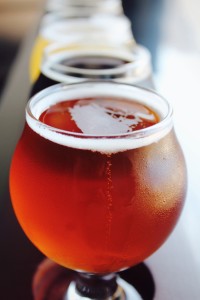 The haziness of a beer is determined in part by a complex of proteins and tannins. [16] These proteins can include gliadin or other proteins found in grains. For this reason, increased haziness in some cases means increased protein and therefore in theory makes sense that there could be an increased possibility of an allergic reaction. However, this haze is present in an earlier phase of beer production but the beer is treated to make it clear using stabilizers, leaving smaller-sized proteins or polypeptides still in the beer but less visible and sometimes less antigenic. Whether or not you react to these protein fragments depends on what type of protein they are, how sensitive you are, and how the proteins were cleaved. The overall protein profile in a beer is not significantly changed following the stabilizing treatments. [16] There are, however, enzymes that actually cleave these proteins at an epitope (a sequence in DNA recognized as an antigen by your immune system) that causes them to be non-reactive to T-cells, an immune cell that creates an allergic response in the body. [15] This is the technique used on beers that were made using barley and/or wheat to make them gluten-free. Just to make things a little more complicated, gluten peptides have at least 50 toxic epitopes. [17] Do these enzyme treatments break down all of these? We don’t know yet.
The haziness of a beer is determined in part by a complex of proteins and tannins. [16] These proteins can include gliadin or other proteins found in grains. For this reason, increased haziness in some cases means increased protein and therefore in theory makes sense that there could be an increased possibility of an allergic reaction. However, this haze is present in an earlier phase of beer production but the beer is treated to make it clear using stabilizers, leaving smaller-sized proteins or polypeptides still in the beer but less visible and sometimes less antigenic. Whether or not you react to these protein fragments depends on what type of protein they are, how sensitive you are, and how the proteins were cleaved. The overall protein profile in a beer is not significantly changed following the stabilizing treatments. [16] There are, however, enzymes that actually cleave these proteins at an epitope (a sequence in DNA recognized as an antigen by your immune system) that causes them to be non-reactive to T-cells, an immune cell that creates an allergic response in the body. [15] This is the technique used on beers that were made using barley and/or wheat to make them gluten-free. Just to make things a little more complicated, gluten peptides have at least 50 toxic epitopes. [17] Do these enzyme treatments break down all of these? We don’t know yet.
Alcohol in beer is produced by the fermentation of sugars by yeast. These sugars come from the grains and therefore, to an extent, more grains (sugars) can cause more alcohol production by yeast. Of course it depends on what type of grain is used and how much gluten is in that particular grain. It also depends on the yeast as some are more tolerant to the increasingly alcohol-laden environment they are in. There are enough variables here that at face value, alcohol does not necessarily correlate with gluten levels.
Testing for Gluten, how reliable is it?
The most commonly used test for determining gluten content uses a technique called ELISA (Enzyme-Linked Immunosorbant Assay) which uses antibodies to detect substances and has been considered the most specific and suitable test we have for detecting gluten. The ELISA using the R5 monoclonal antibody detects gluten/gliadin and similar proteins (prolamins) from related grains and has been considered the most reliable and the most popular method, [18] though testing continues to evolve.
Challenges with gluten testing including the complexity of gluten proteins, the changing consumer need as we continue to better understand the pathophysiology of celiac disease, and variations seen on testing methods currently available. [18] Most breweries send samples of their beer out to external testing companies that use ELISA testing though test strips are commercially available. EZ-gluten for example uses what is called a lateral flow device technique in their at-home kits and claims to be sensitive to detect gluten as low as 10ppm. [19] Still other test kits claim to be able to detect down to 3ppm. The FDA however states that scientifically validated testing methods do not reliably detect gluten less than 20ppm. [12]
Are these tests able to detect hordeins, the type of gluten found in barley?
ELISA may not be the best test to determine all types of gluten as was found in a 2013 study. Mass spectrometry, which is more complicated than ELISA, was shown to be more accurate for detecting hordein, from barley. In the study, 10 of 60 commercial beers were detected to have only 1ppm gluten by ELISA whereas the MS showed that these beers had near-average hordein-content. [20] For this reason, anyone who is particularly sensitive to gluten should be weary of those beers derived from wheat or barley, and other “gluten-free” products that are detected as having less than 20ppm with current methods. Additionally, be cautious about the results of some beer blogs that test gluten. Although it gives us some information and these bloggers aren’t claiming to test for true medical advice, be aware that there may be more allergic-potential in those beers. Unfortunately Mass Spectrometry is not practical to use for this purpose so better versions of ELISA are being developed to detect more of these potentially allergenic proteins more accurately. For example, the R5 Competitive ELISA is more appropriate for hydrolyzed products like beer and therefore more accurate than the previous generation of R5 sandwich ELISA that underestimates gluten protein fragments. [21] This ELISA however gives us results in gluten peptides rather than gluten molecules causing a bit of translation difficulty into our current FDA standards.
In summation, there are different ways to detect gluten in beer, none of which are both completely accurate and practical but we are getting closer all the time.
Now for the fun stuff…
Gluten-free Beer
Gluten-free beers are becoming more and more palatable with more complex flavor profiles due to the rise in awareness of gluten-intolerance and celiac disease, some are even local! For many beer-enthusiasts gluten-free beer gets a bad rap, falling short of expectations, but some of these will surprise you. The first few got particularly high marks and none of these received poor ratings. Overall, gluten-free beers tend to come off a little lighter than gluten-containing beers but the ones we tried could certainly pass for a regular beer. For the record, though no connoisseur, any reviews I have given on the following beers are not coming from a complete beer novice. I’m proud of the 500 level course I took in undergrad on the Chemistry of Brewing and I even made the pilgrimage to Belgium to try the famed Westvleteren XII made by the Trappist monks of the St. Sixtus monastery. My husband and I are both the proud brewers of several interesting beers including a jasmine Belgian-style ale and Stumptown espresso stout amongst other creations.
As a reminder, to be classified as gluten-free a beer must contain less than 20 ppm gluten. Some people with celiac disease still find that these “gluten-free” beers that contain trace gluten peptides cause symptoms, though many tolerate them well. For this reason I have distinguished between 100% gluten-free beers and those made in such a way that they contain trace gluten. If the beer is made with barley, wheat, or rye, they almost certainly contain some degree of gluten, even if below 20ppm and, though technically classified as gluten-free, could theoretically cause symptoms in very sensitive individuals.
100% Gluten-Free Beer Start to Finish: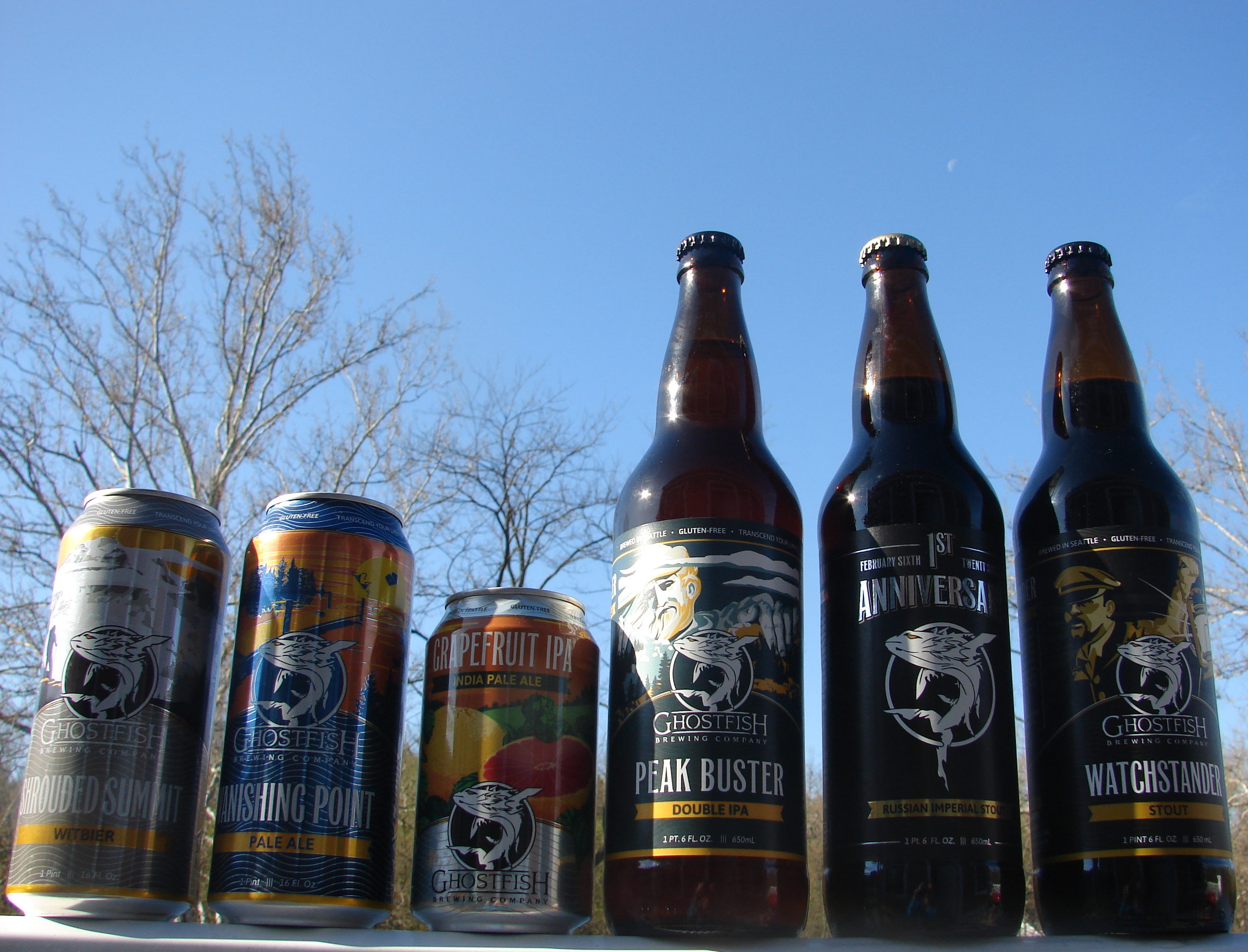
UPDATE! I had the opportunity to try 6 beers from Ghostfish Brewing Company out of Seattle as they were kind enough to send some samples. I knew I hadn’t included everyone in my list but they are truly worth checking out! We had a tasting event with 6 tasters who all enjoy different types of beer. The front-runner was the Peak Buster Double IPA which is honestly one of my favorite IPAs (not just for gluten-free!) and was the favorite for 2 other IPA lovers– hints of fruit and caramel, hoppy, but not bitingly bitter, no off-aftertaste that you get with some gluten-free beers, and surprisingly smooth for 9.4% ABV and 120 IBUs! Another favorite was the Shrouded Summit Witbier, even by a taster who doesn’t typically like witbiers. Tasting note descriptions included apricot, mango, and strawberry, without being overpowering, and a great summer beer. The Grapefruit IPA was given an immediate “10” at first taste by one of our tasters! We agreed that the grapefruit was much more subtle than expected and less noticeable than other fruit IPAs.
Plasma Sake IPA: A sake IPA? Okay! This beer is brewed in Massachusetts at Element Brewing and gets very good reviews from Beer Advocate. Careful though, it’s 9.3% ABV! Grains used include brown rice, malted millet, malted buckwheat, and top it all off with Aramis hops, so it’s 100% gluten-free.
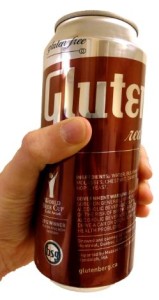 Glutenberg IPA: This IPA also received very good reviews on Beer Advocate and has won gold at the Canadian Brewing Awards 2 years in a row. It is brewed with millet, quinoa, and buckwheat by our neighbors up north in Quebec, Canada. We’ve taste-tested Glutenberg’s Red Ale (pictured) and it wasn’t bad! Standard red ale, caramel aromas, not a ton of flavor or body, but certainly drinkable!
Glutenberg IPA: This IPA also received very good reviews on Beer Advocate and has won gold at the Canadian Brewing Awards 2 years in a row. It is brewed with millet, quinoa, and buckwheat by our neighbors up north in Quebec, Canada. We’ve taste-tested Glutenberg’s Red Ale (pictured) and it wasn’t bad! Standard red ale, caramel aromas, not a ton of flavor or body, but certainly drinkable!
Steadfast Brewing Co.: Steadfast is in Albany, NY and all of their beers are naturally gluten-free meaning they are made using grains that do not contain gluten to begin with, so no worries of any residual gluten sneaking through! Several of their beers are not hard to find, though their Oatmeal Cream Stout which sounds pretty good is a little more elusive because it is only available in limited quantities. It is flavorful and the gluten-free oats provide a robust body.
A Dark Night and GoodbIPA: Four My Homie: These are both 100% gluten-free options from Departed Soles brewing in downtown Jersey City. A Dark Night is a Cascadian Dark Ale designed to taste like a black and tan and the IPA is award-winning.
Tweason’ale: Nearby and beloved brewery Dogfish Head created this sorghum-based fruity ale as a more unique alternative to the average gluten-free options. With a strawberry, buckwheat honey undertone, Tweason’ale might be a refreshing change on a summer’s night. Yes, buckwheat is gluten-free.
Glutenator: Salt Lake City’s Epic Brewing created this gluten-free beer that separates itself from the others by not using sorghum, a go-to base for gluten-free beers. It is instead made from millet, brown rice, and sweet potatoes giving it a sweetened finish.
Green’s Gluten-Free Beers: Green’s Brewery makes quite a few gluten-free beers and they tend to be pretty easy to find, including Discovery Amber Ale, Enterprise Dry-Hopped Lager, several Belgian-style ales, and an IPA among others. We taste-tested their Quest Gluten-Free Triple Blonde Ale and found that its’ bright and light body still managed to cover up the 8.5% ABV pretty well and we could see enjoying it on a hot summer’s day. In the United States Green’s beers are all made with 100% gluten-free ingredients. More details can be found here!
Burning Brother’s Brewery: Hailing from St. Paul, MN, this brewery is completely committed to having zero ppm gluten in their beer, so much so that they do not permit anything containing gluten to enter the brewery! They take pride in their Pyro American Pale Ale, Roasted Coffee Strong Ale, Raj-Agni IPA, and more.
Celia Saison: Brewed in Massachusetts by Ipswich Brewery using a sorghum base in a Farmhouse Ale/Saison-style.
Sprecher Brewing Co.: Shakparo Ale may be worth trying simply for the name of the style—it’s an unfiltered, fire-brewed, African-style ale concocted in Milwaukee, designed after the sub-Saharan African beers that are brewed with sorghum and millet due to lower supply of wheat and barley in the region. Sprecher also makes the naturally gluten-free Mbege, brewed with bananas, sorghum, and millet.
Harvester/Ground Breaker Brewing: The IPA No. 1 is piney, citrus, and bitter, made just for you hop-lovers out there. Ground Breaker Brewing is a dedicated 100% gluten-free brewery straight out of Portland, Oregon with several gluten-free options from which to explore.
3R Raspberry Ale: The founder of this ale’s Colorado brewery, New Planet, has celiac disease himself. This crisp, and as you might guess, fruity ale is award-winning. In 2013 the brewery also removed all corn-based products from their recipe. It’s made with sorghum, brown rice, raspberries, orange peel, yucca extract, hops, and yeast.
Fox Tail: Joseph James Brewing created this one from an organic rice base. It is described as being light, citrusy, bitter, but rather sweet. Overall, okay.
Redbridge: This one gets points for value, running somewhere around $7 for a 6 pack, but actually does get poor ratings. It’s sorghum-based and light, made by Anheuser-Busch. For the right person it might be good on a hot summer’s day.
Beers Made Using Gluten-Containing Grains (Such as Barley/Wheat) but Designed to Have Less Than 20 ppm Gluten:
Omission Brewery: Out of San Diego, this brewery makes an IPA, pale ale, and lager that actually do meet the cut off for gluten-free but can’t be labeled this way because of the way it is processed. It is made with a low protein-barley then treated with a proprietary process using an enzyme to help break down the gluten. You can even see the gluten-content test results for each batch on their website: omissionbeer.com. We taste-tested their IPA and it was a hit! As one taster said, “If you didn’t know you were drinking a gluten-free beer to begin with, you probably wouldn’t know.”
Brunehaut Amber: This organic Belgian Amber Pale Ale from Brasserie De Brunehaut is complex for a gluten-free beer with a caramel, smoky-sweet quality. It is brewed using barley and the gluten is extracted out to meet the gluten-free standards.
Vagabond Pale Ale: Vagabond is Scottish brewery Brewdog’s first gluten-free beer. It is light-medium bodied, fruity and piney. It was brewed using 100% malted barley but meets the cut-off having less than 20 ppm gluten.
Saxon: Saxon is a lager made by Carlsberg Brewery of Sweden using barley, malt, and hops.
Snowman Brewing Co.: Out of Canada, their mission is to brew great gluten-free craft beer. They have a Honey Lavender IPA, Top Hat Ale, Who’s That Brown Ale, and Pail Ale. These are going to be harder to find as it is a smaller brewery but the few reviews that are online are pretty good. The Honey Lavender IPA actually is 100% gluten-free but the others appear to be made with barley and/or wheat.
Great Frontier Brewing Co.: This brewery makes gluten-free, gluten-reduced, and traditional beers though there’s not a lot of detail about their current beers out there right now. Their Blonde Annie did well at the 2011 National Home Brewing Competition and received a gold medal at the Great American Beer Festival.
Cuvée des Lacs de l’Eau d’Heure: Belgian brewer Silenrieux touts this malty, light beer having only 2ppm gluten according to their website.
Daura: This Euro Pale Lager by Estrella Damm in Spain is another that can call itself gluten-free though it does have trace amounts of gluten (less than 6ppm). This one seems to be more widely available than some.
Low-Gluten Beer
While completely gluten-free beer can help ease the pain of a no-gluten prescription it can often still be disappointing for the true beer connoisseur or in the very least, less readily available. Although it’s usually better to completely avoid gluten if you’ve been given this recommendation, for some people a little bit of gluten here and there can be okay. I’ll say it now, if you have a diagnosis of celiac disease, even a little bit of gluten can do significant damage and sticking to known gluten-free options is the way to go. For those that can handle gluten in moderation, knowing some lower gluten beer options can help stave off symptoms while providing perhaps enough leniency for a more sustainable low-gluten diet. You’ll notice, many of these have been tested to have less than 20ppm gluten by the Swedish National Food Agency but these beers make no claims of being gluten-free. There are several blogs that do independent testing of gluten levels in beer that have had results indicating more beers could potentially join this group, but I didn’t feel comfortable posting them here just yet.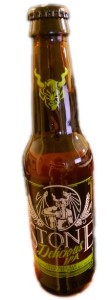
Delicious IPA: Stone Brewing’s low-gluten IPA crafted to reduce gluten gets a “very good” rating on Beer Advocate. Stone does not make claims about the actual gluten content in-bottle or on draft because results cannot be verified, but you can see the results online which read less than 10ppm in Jan 2016. Their previous low-gluten beer, Stripped Away IPA, is no longer being brewed. If you’re in our neighborhood, Delicious IPA can be found at the Bottle Stop on W. Avon Rd.
Corona Extra: Corona is made using corn and rice in addition to malted barley allowing it to have a relatively low gluten content, less than 20 ppm [22].
Carlsberg Beer: Less than 20 ppm [22]
Pilsner Urquell: Less than 20 ppm [22]
Brewery Rickoli: If you spend much time in Wheat Ridge, Colorado or happen to be going through, head to Brewery Rickoli. They have the MEH! (Most Excellent Homebrew) Cream Ale, Quicher Bichen Strong Golden Ale, Enormous Richard Double Cream Ale, and more that get great reviews. All of their beers have had the gluten reduced to less than 10ppm. They do not yet call themselves “gluten-free” though that may come.
Wheat-Free Beer
If you do not have celiac disease but are avoiding gluten because you feel better not eating it, there’s a possibility that wheat is the bigger problem. If this is the case, simply avoiding beers that contain wheat might do the trick. Barley, though a source of gluten, contains less gluten than wheat, which is another reason why gluten-sensitive/intolerant individuals sometimes find wheat-free beers more tolerable. None of these breweries advertise these beers as wheat-free so there’s always the possibility that they contain some. Therefore, if you have a severe wheat allergy you should still stay clear. According to the Reinheitsgebot, or German Beer Purity Law, beer should only be made with water, barley, and hops (and later, yeast was added to the list), so you shouldn’t feel too bad about missing out on wheat. Most beer styles do not contain wheat, but some recipes call for a combination of barley and some wheat to make up the malt so I wouldn’t assume that a beer is wheat-free based on the style if you have a true allergy. Since there are SO many wheat-free beers out there, I’ll keep my list to a few locals and some very mainstream beers.
Local Wheat-Free (not Gluten-Free) Beers
Back East Brewery has quite a few wheat-free beers including their Back East Ale, Golden Ale, Porter, Palate Mallet, Imperial Stout, Summer Ale, Octoberfest, Shad Derby Pale Ale, and the Wakatu Pale Ale.
Thimble Island Brewing has a number of wheat-free ales including their American Ale, Coffee Stout, IPA, Black & Tan, Ghost Island Double IPA, and their seasonal wheat-free offerings include “Mutually Assured Destruction” Russian Imperial Stout, Dark Pumpkin Porter, and Session IPA.
Two Roads Brewery’s year-round wheat-free beers include Ol’Factory Pils, Lil’ Heaven Session IPA, Road 2 Ruin Double IPA, and the brand new Espressway Coffee Stout. The winter seasonal, Henry’s Farm Doppelbock, is also wheat-free.
Thomas Hooker Brewery’s Defiance Double IPL is made with Pilsner, Carahell, and Vienna barley malts and their Liberty Doppelbock is also wheat-free.
Narragansett’s Lager is brewed with 6-row malt, Pacific NW hops, and Iowa corn. Their Light ale, Big Mamie, and likely more are wheat-free.
Also check out Relic, Firefly Hollow, Stone Creek, New England, Half Full, Olde Burnside, City Steam, Cottrell, Beer’d, Southport, Shebeen, Top Shelf, Broadbrook, Stubborn Beauty, Overshores, DuVig, Black Hog, Powder Hollow, Black Pond, Outer Light, Still Hill, Cold Creek, No Worries, Kent Falls, OEC, Veracious, Steady Habit, Brewery Legitimus and Willimantic Brewing amongst other great local breweries. Sorry if I missed anyone!
Mainstream Wheat-Free:
I hesitate to mention these because I find the craft and local brews far more exciting, but I know many people enjoy these. As I said before, many beers are wheat free, this includes many mainstream beers that are made with grains like corn including: Budweiser, Busch, Coors Light, Heineken, Pabst Blue Ribbon, Sapporo, Sierra Nevada Pale Ale, Stella Artois, Tsingtao, and Yuengling amongst many others.
I hope you have found this synopsis of gluten and beer informative and you now feel empowered to choose your gluten-free and low-gluten beers with knowledge in hand. We’d love to hear about your favorites! Cheers!

Disclaimer: We cannot guarantee the content of the beers discussed above. As always, with any health concerns, please consult your physician.
Works Cited
[1] S. La Vieille, S. Dubois, S. Hayward and T. Koerner, “Estimated Levels of Gluten Incidentally Present in a Canadian Gluten-Free Diet,” Nutrients, vol. 6, no. 2, pp. 881-896, 6 February 2014.
[2] J. Murray, “Testing Celiac Disease,” National Institute of Health Diabetes and Digestive and Kidney Diseases , September 2013. [Online]. Available: http://www.niddk.nih.gov/health-information/health-topics/diagnostic-tests/testing-celiac-disease/Pages/diagnostic-test.aspx.
[3] P. Sotkovsky, J. Sklenar and P. Halada, “A new approach to the isolation and characterization of wheat flour allergens,” Clin Exp Allergy, vol. 41, no. 7, pp. 1031-43, Jul 2011.
[4] A. Fasano, A. Sapone, V. Zevallos and D. Schuppan, “Nonceliac Gluten Sensitivity,” Gastroenterology, vol. 148, no. 6, pp. 1195-1204, 2015.
[5] A. Fasano, A. Sapone, V. Zevallos and D. Schuppan, “Nonceliac gluten sensitivity,” Gastroenterology, vol. 148, no. 6, pp. 1195-1204, 2015.
[6] A. Sapone, L. de Magistris, M. Pietzak, M. Clemente and A. Tripathi, “Zonulin upregulation is associated with increased gut permeability in subjects with type 1 diabetes and their relatives,” Diabetes, vol. 55, no. 5, pp. 1443-9, 2006.
[7] A. Fasano, T. Not, W. Want and S. B. I. Uzzau, “Zonulin, a newly discovered modulator of intesitnal permeability, and its expression in coeliac disease,” Lancet, vol. 355, no. 9214, pp. 1518-9, 2000.
[8] J. Ochoa-Repáraz, D. Mielcarz, L. Ditrio, A. Burroughs, D. Foureau and S. Haque-Begum, “Role of gut commensal microflora in the development of experimental autoimmune encephalomyelitis,” J Immunol, vol. 183, pp. 6041-6050, 2009.
[9] H. Yokote, S. Miyake, J. Croxford, S. Oki and H. Mizusawa, “NKT cell-dependent amelioration of a mouse model of multiple sclerosis by altering gut flora,” Am J Pathol, vol. 173, pp. 1714-1723, 2008.
[10] C. Edward, “Commensal gut bacteria and the etiopathogenesis of rheumatoid arthritis,” J Rheumatol, vol. 35, pp. 1477-1479, 2008.
[11] M. Cereijido, R. Contreras, D. Florew-Benitez and C. Flores-Maldonado, “New diseases derived or associated with the tight junction,” Arch Med Res, vol. 38, pp. 465-478, 2007.
[12] A. Fasano, “Pathological and therapeutical implications of macromolecule passage through the tight junction,” Tight Junctions, vol. CRC, pp. 697-722, 2001.
[13] FDA, “FDA defines “gluten-free” for food labeling,” 2 August 2013. [Online]. Available: http://www.fda.gov/NewsEvents/Newsroom/PressAnnouncements/ucm363474.htm. [Accessed 10 February 2016].
[14] S. Adams, “How much gluten is in a normal diet, and how much dioes it take to cause damage in a celiac?,” Celiac.com, 26 July 1996. [Online]. Available: http://www.celiac.com/articles/38/1/How-much-gluten-is-in-a-normal-diet-and-how-much-does-it-take-to-cause-damage-in-a-celiac/Page1.html. [Accessed 2016].
[15] C. Catassi, E. Fabiani and G. Iacono, “A prospective, double-blind, placebo-controlled trial to establish a safe gluten threshold for patients with celiac disease,” American Society of Clinical Nutrition, vol. 85, no. 1, pp. 160-166, 2007.
[16] S. Van Zandycke, “Gluten-Reduced Beers Made With Barley,” The New Brewer, pp. 80-84, Nov/Dec 2013.
[17] M. Sheenan, E. Evans and J. Skerrit, “Improved Methods of Determination of Beer Haze Protein Derived from Malt,” Australian Barley Technical Symposium, 1999.
[18] A. Fasano, “Zonulin and its regulation of intestinal barrier function: the biological door to inflammation, autoimmunity, and cancer,” Physiological Reviews, vol. 91, no. 1, pp. 151-175, 2011.
[19] N. H. Mermelstein, “Testing for Gluten in Foods,” Food Technology, vol. 65, no. 2, February 2011.
[20] “EZ Gluten,” ELISA Technologies, Inc, 2016. [Online]. Available: www.ezgluten.com. [Accessed February 2016].
[21] T. GJ, C. ML, B. MJ, G. HP and H. CA, “Measuring hordein (gluten) in beer –a comparison of ELISA and mass spectrometry,” PLos One, vol. 8, no. 2, 2013.
[22] “Gluten Analysis Technidaues,” CNB Proteomics Facility, 2013. [Online]. Available: http://proteo.cnb.csic.es/proteomica/glutentechniques.jsp#tech_2. [Accessed February 2016].
[23] S. N. F. Agency, “Gluten content of the beer analyzed at Livsmedelsverke,” SLV, 2005. [Online]. Available: http://web.archive.org/web/20120113013106/http://www.slv.se/upload/dokument/risker/allergi/0510_WEBsorttillverkare.pdf.
[24] A. Fasano, “Zonulin, regulation of tight junctions, and autoimmune disease,” Ann N Y Acad Sci, vol. 1258, no. 1, pp. 25-33, Jul 2012.

